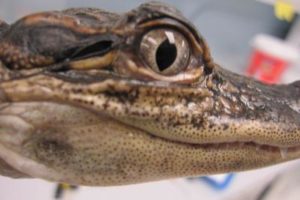journal of experimental biology
44-year-old mystery of how fleas jump resolved
If you thought that we know everything about how the flea jumps, think again. In 1967, Henry Bennet-Clark discovered that fleas store the energy needed to catapult themselves into the air in an elastic pad made of resilin. However, in the inte…
How spring-loaded filaree seeds self launch
Even by invading plants’ standards, the filaree, or common stork’s bill, has been remarkably successful. Introduced into North America in the eighteenth century, it is now endemic in south-western states such as California, and the plant’s intriguin…
Blue whale-sized mouthfuls make foraging super efficient
Diving blue whales can dive for anything up to 15 minutes. However, Bob Shadwick from the University of British Columbia, Canada, explains that blue whales may be able to dive for longer, because of the colossal oxygen supplies they could carry in t…
Snakes on a rope: Researchers take a unique look at the climbing abilities of boa constrictors
In a unique study involving young boa constrictors, University of Cincinnati researchers put snakes to work on varying diameters and flexibility of vertical rope to examine how they might move around on branches and vines to gather food and escape e…
How diving leatherback turtles regulate buoyancy
Leatherback turtles are remarkably versatile divers. Routinely diving to depths of several hundred meters, leatherbacks are occasionally known to plunge as deep as 1250m. The animals probably plumb the depths to avoid predators, search for prey and …
New equation calculates cost of walking for first time
Any parent that takes their kid out for a walk knows that children tire more quickly than adults, but why is that? Do kids and small adults walk differently from taller people or do they tire faster for some other reason? Peter Weyand from Southern …
Discus fish parent young like mammalian mothers
Few fish are famed for their parenting skills. Most species leave their freshly hatched fry to fend for themselves, but not discus fish. Jonathan Buckley from the University of Plymouth, UK, explains that discus fish young feed on the mucus that the…
Humidity makes gecko feet stickier
Human adhesives are famed for their fallibility. Gooey glues soon lose their grip, are easily contaminated and leave residues behind. But not gecko feet. Geckos can cling on repeatedly to the smoothest surfaces thanks to the self-cleaning microscopi…
Flying fish glide as well as birds
We’re all familiar with birds that are as comfortable diving as they are flying but only one family of fish has made the reverse journey. Flying fish can remain airborne for over 40s, covering distances of up to 400m at speeds of 70km/h. Haecheon Ch…

